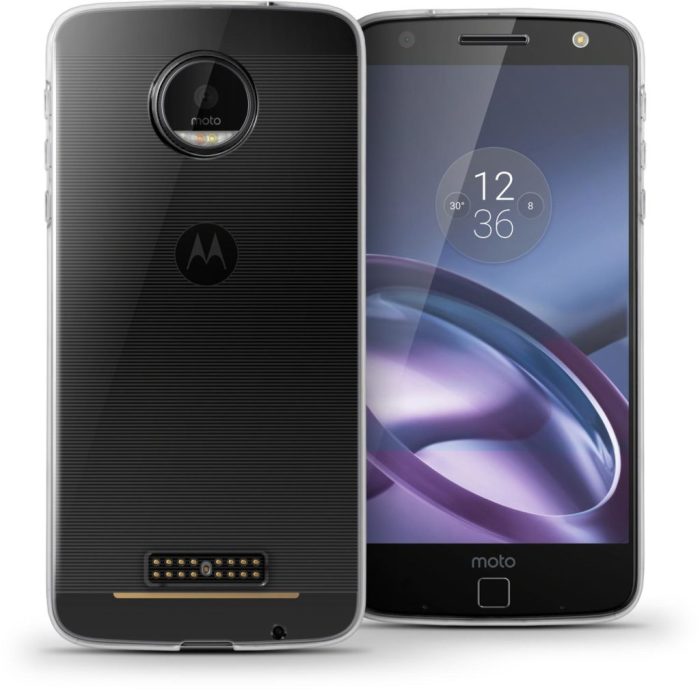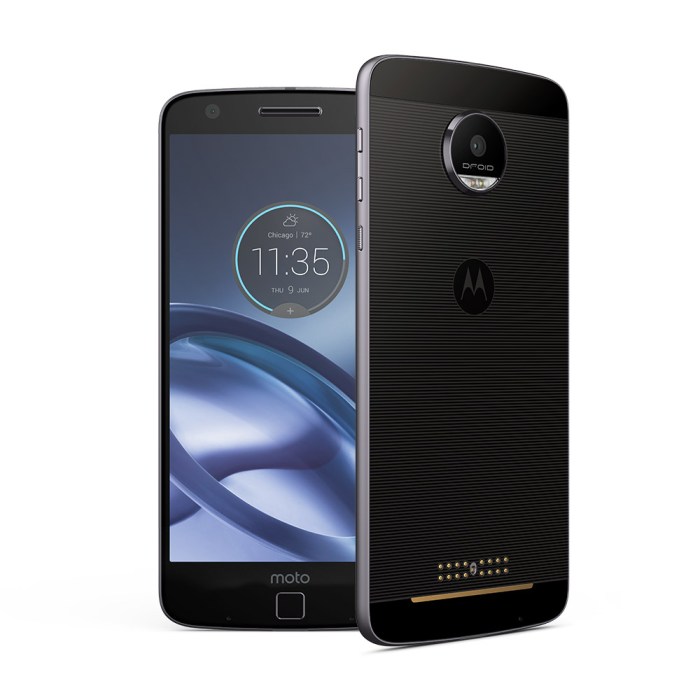The Rise of the Moto Z Droid
The Moto Z Droid, released in 2016, emerged at a time when Apple’s iPhone was dominating the smartphone market. Motorola, once a leading phone manufacturer, had lost its way in the face of Apple’s innovative products and strong brand image. The Moto Z Droid was Motorola’s bold attempt to reclaim its position in the market and challenge Apple’s dominance.
The Moto Z Droid was more than just another Android phone. It was designed to be a modular device, allowing users to customize their phone’s functionality with snap-on “Moto Mods.” These mods offered a range of features, from enhanced audio and battery life to a projector and even a Hasselblad camera. This modularity gave the Moto Z Droid a unique selling proposition that appealed to tech enthusiasts and those seeking a more personalized smartphone experience.
Key Innovations Introduced by the Moto Z Droid
The Moto Z Droid introduced several key innovations that were not present in Apple’s iPhones at the time. These innovations included:
- Modular Design: The Moto Z Droid’s modular design allowed users to customize their phone’s functionality with snap-on “Moto Mods.” This provided a level of personalization and flexibility that was not available on iPhones.
- Thin and Light Design: The Moto Z Droid was one of the thinnest and lightest smartphones available at the time. This was a significant departure from the bulky and heavy design of many other Android phones and iPhones.
- Powerful Processor: The Moto Z Droid was equipped with a powerful Qualcomm Snapdragon 820 processor, which offered exceptional performance for demanding tasks such as gaming and video editing.
- High-Resolution Display: The Moto Z Droid featured a high-resolution AMOLED display that provided vibrant colors and deep blacks. This was a significant upgrade from the LCD displays used in iPhones at the time.
- Fast Charging: The Moto Z Droid supported TurboPower fast charging technology, which allowed users to quickly recharge their phone. This was a feature that was not available on iPhones until later models.
Targeting Apple Users
Motorola employed a variety of marketing strategies to target Apple users. These strategies included:
- Highlighting the Moto Z Droid’s Unique Features: Motorola focused on promoting the Moto Z Droid’s modular design and its ability to customize the phone’s functionality. This was a key differentiator from iPhones, which were known for their closed ecosystem.
- Emphasizing the Moto Z Droid’s Performance and Design: Motorola emphasized the Moto Z Droid’s powerful processor, high-resolution display, and thin and light design. This appealed to users who were looking for a powerful and stylish smartphone.
- Offering Competitive Pricing: Motorola priced the Moto Z Droid competitively compared to iPhones, making it an attractive option for budget-conscious consumers.
Motorola’s Innovation
Motorola, known for its pioneering work in mobile technology, took a bold step with the Moto Z Droid, introducing a modular approach that challenged the closed ecosystems of its competitors. This strategy, embodied in the Moto Mods ecosystem, allowed users to customize their phone’s functionality and expand its capabilities beyond the limitations of traditional smartphones.
The Moto Mods Ecosystem: A Modular Advantage
The Moto Mods ecosystem was a game-changer. It allowed users to attach magnetically powered modules, called Moto Mods, to the back of the Moto Z Droid, instantly adding features like a portable projector, a high-fidelity speaker, a battery pack, or a Hasselblad camera. This modularity gave users unprecedented flexibility and customization options, allowing them to adapt their phone to their specific needs and preferences.
Comparison of Moto Z Droid and iPhone Features
Here’s a table comparing the Moto Z Droid’s features and specifications with the iPhone of the same era, the iPhone 7:
| Feature | Moto Z Droid | iPhone 7 |
|—|—|—|
| Display | 5.5″ AMOLED, 1440 x 2560 pixels | 4.7″ IPS LCD, 750 x 1334 pixels |
| Processor | Qualcomm Snapdragon 820 | Apple A10 Fusion |
| RAM | 4 GB | 2 GB |
| Storage | 64 GB | 32 GB |
| Camera | 13 MP rear, 5 MP front | 12 MP rear, 7 MP front |
| Battery | 2600 mAh | 1960 mAh |
| Operating System | Android 6.0.1 Marshmallow | iOS 10 |
| Notable Features | Moto Mods compatibility, water-resistant | Water-resistant, Apple Pay |
| Price | $624 | $649 |
Price Point Comparison: Value Proposition
The Moto Z Droid, with a starting price of $624, was competitively priced compared to the iPhone 7, which had a starting price of $649. The Moto Z Droid offered a larger display, more RAM, and a higher resolution camera at a slightly lower price point. However, the iPhone 7 offered a more streamlined and integrated user experience with its closed ecosystem and Apple’s renowned software.
The Moto Z Droid’s value proposition was centered on its modularity and customization options. While the iPhone 7 focused on a polished and integrated user experience, the Moto Z Droid offered a more customizable and adaptable solution, catering to users who valued versatility and the ability to expand their phone’s functionality beyond its core capabilities.
The Moto Z Droid’s Appeal to Apple Users: Motorola Tricks Apple Fans Moto Z Droid
The Moto Z Droid, despite its Android roots, offers a compelling alternative to Apple’s iPhone for users who appreciate the sleek design, user-friendly interface, and robust app ecosystem of iOS. While the Moto Z Droid might not be a perfect clone, it successfully incorporates features and functionalities that resonate with Apple users, making it a worthy contender.
The Moto Z Droid’s Customization Options and Modularity
The Moto Z Droid stands out from the iPhone by offering a unique modularity system. This allows users to customize their phone’s functionality by attaching various “Mods” that enhance its capabilities. This modularity offers a level of personalization that Apple users might find appealing, as it allows them to tailor their phone to their specific needs and preferences.
For example, the Moto Z Droid’s modular system enables users to:
- Boost battery life with a Moto Mod that houses an additional battery, addressing a common concern among smartphone users.
- Enhance audio quality with a Moto Mod that transforms the phone into a portable speaker, catering to those who enjoy listening to music or podcasts.
- Improve camera performance with a Moto Mod that adds a Hasselblad-branded lens, appealing to users who prioritize high-quality photography.
- Expand productivity with a Moto Mod that functions as a projector, enabling users to present presentations or share content on a larger screen.
This ability to expand the phone’s functionality beyond its core features aligns with Apple’s design philosophy of offering a seamless and integrated user experience. However, the Moto Z Droid takes this concept a step further by allowing users to actively participate in customizing their device, which can be seen as a more open and flexible approach to technology.
The Impact of the Moto Z Droid on the Smartphone Market
The Moto Z Droid, with its modular design and focus on customization, aimed to disrupt the smartphone market and challenge Apple’s dominance. While it didn’t completely dethrone the iPhone, the Moto Z Droid did make a significant impact, particularly in attracting Apple users. Let’s delve into how the Moto Z Droid affected the smartphone market and its legacy.
The Moto Z Droid’s Success in Attracting Apple Users
The Moto Z Droid’s modularity was a key factor in its appeal to Apple users. This feature allowed users to personalize their phones with a variety of add-ons, such as a Hasselblad camera, a JBL speaker, or a battery pack. This flexibility resonated with Apple users who were accustomed to a highly customizable ecosystem. Additionally, the Moto Z Droid’s sleek design and high-end specifications, coupled with its competitive pricing, made it a compelling alternative to the iPhone.
The Long-Term Impact of the Moto Z Droid on the Android Ecosystem
The Moto Z Droid’s modularity contributed to the evolution of the Android ecosystem. It demonstrated the potential for innovation in smartphone design and functionality, inspiring other Android manufacturers to explore similar concepts. This shift towards modularity and customization helped to differentiate Android devices from Apple’s closed ecosystem, making Android more attractive to users seeking flexibility and choice.
Comparing the Moto Z Droid’s Legacy to Other Attempts by Android Manufacturers to Challenge Apple’s Dominance, Motorola tricks apple fans moto z droid
The Moto Z Droid’s legacy can be compared to other attempts by Android manufacturers to challenge Apple’s dominance. While some, like Samsung’s Galaxy S series, have achieved significant success, they haven’t been able to consistently dethrone the iPhone. The Moto Z Droid’s focus on modularity offered a unique approach to differentiation, but it ultimately failed to achieve widespread adoption. This highlights the challenges faced by Android manufacturers in competing with Apple’s established ecosystem and brand loyalty.
Motorola tricks apple fans moto z droid – The Moto Z Droid may not have dethroned Apple, but it certainly left its mark. It showed that Android could be just as stylish, powerful, and customizable as iOS. It was a bold move that reminded everyone that innovation doesn’t have to come from just one company. The Moto Z Droid’s legacy continues to inspire, reminding us that the smartphone landscape is always evolving, and there’s always room for a challenger to shake things up.
Motorola’s Moto Z Droid is definitely turning heads, especially among Apple fans looking for a change. The modular design and powerful specs are hard to resist. But while Motorola is making waves, HTC is also getting in on the action with the htc desire 10 teaser , promising a sleek and affordable option. It’ll be interesting to see how these two phones fare in the competitive market, each offering a unique blend of features and price points.
 Standi Techno News
Standi Techno News

